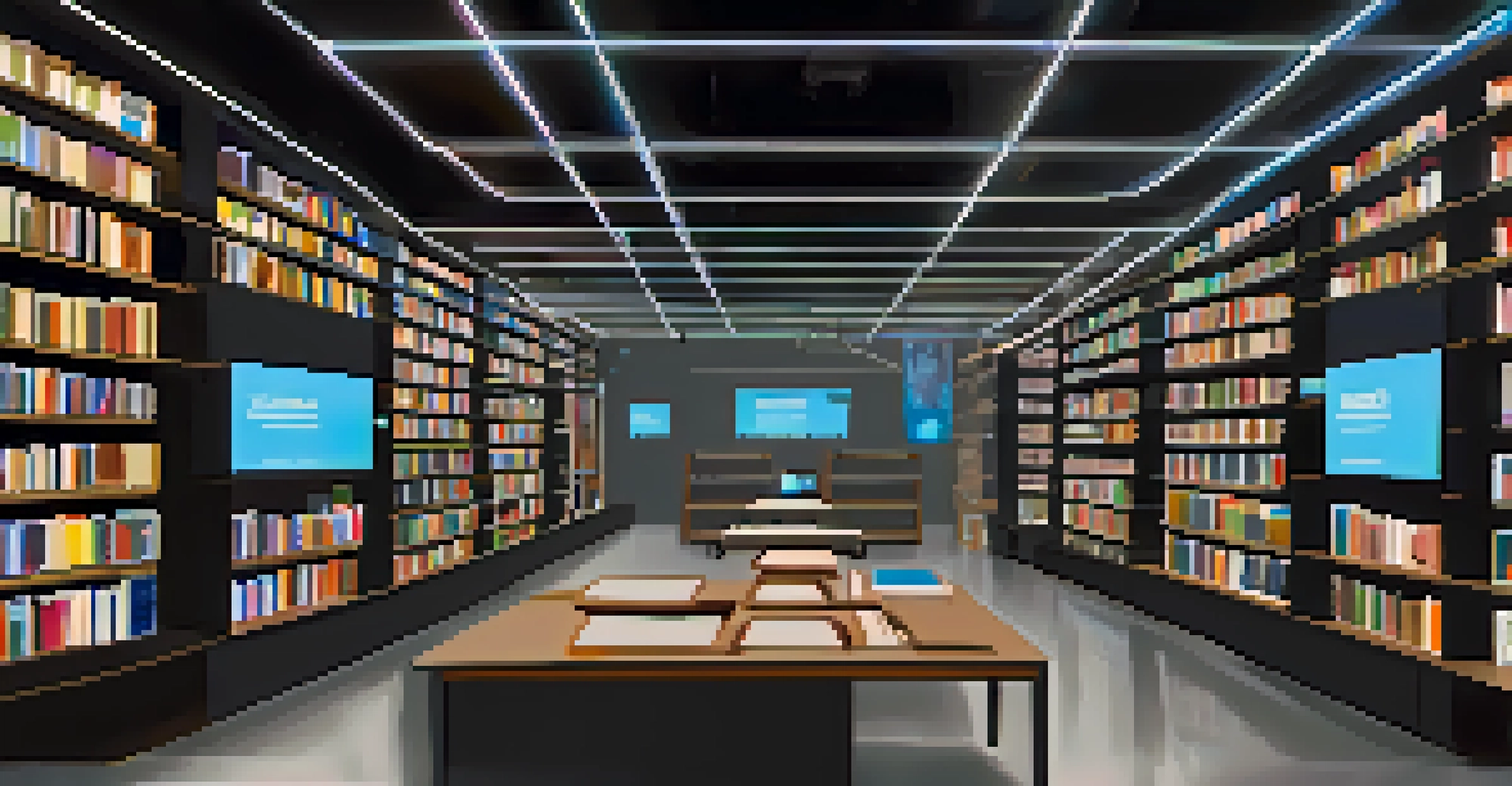Addressing Misinformation and AI in Educational Spaces

Understanding Misinformation in Educational Contexts
Misinformation can be defined as false or misleading information, often spread unintentionally. In educational settings, this can lead to confusion among students and educators alike. For instance, a viral social media post claiming a false scientific fact may affect students' understanding of a subject.
The greatest danger of misinformation is that it can spread faster than the truth.
The rise of digital platforms has made it easier for misinformation to spread quickly, creating challenges for educators. They must navigate a landscape where distinguishing between credible sources and dubious claims is increasingly difficult. This is especially true when students rely on the internet for research and learning.
Addressing misinformation is crucial to fostering critical thinking skills. Educators can guide students in evaluating sources, promoting a culture of inquiry and skepticism that is essential for academic growth.
The Role of AI in Spreading Misinformation
Artificial Intelligence (AI) can inadvertently amplify misinformation by generating and sharing content at rapid speeds. Algorithms designed to engage users may prioritize sensationalist content, leading to a distorted understanding of reality. For example, AI-generated articles can mimic legitimate news sources, making it hard for readers to discern the truth.

Moreover, AI technologies are increasingly used in educational tools, posing a double-edged sword. While they can facilitate learning, they can also perpetuate misinformation if not correctly programmed. Educators must remain vigilant about the information provided by these tools to ensure students receive accurate knowledge.
Misinformation Challenges Education
Misinformation can confuse students and educators, making it essential to navigate credible sources in a digital landscape.
The key here is to harness AI's potential while being aware of its pitfalls. By incorporating discussions about AI's role in information dissemination, educators can prepare students to navigate this complex digital landscape.
Strategies for Educators to Combat Misinformation
To effectively combat misinformation, educators can adopt various strategies that empower students. Incorporating media literacy into the curriculum is a fundamental step, helping students discern credible information from falsehoods. This could involve analyzing news articles or fact-checking social media posts.
In a world where misinformation can travel at the speed of light, critical thinking is our best defense.
Another effective strategy is promoting collaborative learning experiences. When students work together to research a topic, they can challenge each other’s perspectives and share insights. This collaborative approach not only enhances their understanding but also fosters a community of critical thinkers.
Additionally, educators can create a safe space for discussions, encouraging students to voice doubts and questions about the information they encounter. This openness can lead to deeper understanding and better retention of knowledge.
Integrating Technology to Address Misinformation
Technology can be a powerful ally in addressing misinformation in education. Educators can utilize digital tools that promote fact-checking and reliable sourcing, helping students become more discerning consumers of information. Platforms like Snopes or FactCheck.org can serve as excellent resources.
Moreover, incorporating apps and online resources that focus on media literacy can enhance the learning experience. For example, interactive quizzes or workshops can engage students in identifying misinformation, making learning both fun and informative. This gamification of education helps students retain information better.
AI's Role in Spreading Misinformation
Artificial Intelligence can inadvertently amplify misinformation, complicating how information is presented and understood in educational settings.
By integrating technology effectively, educators can create a more informed student body. This not only equips them with skills for academic success but also prepares them to be responsible digital citizens.
The Importance of Critical Thinking Skills
Critical thinking is an essential skill that helps students navigate the complexities of misinformation. By encouraging students to question the validity of sources, educators foster a mindset that values inquiry over acceptance. This approach can be cultivated through discussions and debates in the classroom.
Incorporating real-world scenarios into lessons can also enhance critical thinking. For example, analyzing current events or controversial topics can prompt students to evaluate different viewpoints and the information behind them. This practical application of critical thinking makes the lessons more relevant and impactful.
Ultimately, developing critical thinking skills prepares students to face misinformation in their daily lives. It's about giving them the tools to think independently and make informed decisions.
Engaging Parents and Communities in Education
Addressing misinformation in educational spaces isn't solely the responsibility of educators; parents and communities play a vital role as well. Engaging parents through workshops or informational sessions can equip them with strategies to help their children discern credible information. This collaboration strengthens the education ecosystem.
Community involvement can also enhance educational programs. Local organizations can partner with schools to provide resources, workshops, or guest speakers who discuss the importance of media literacy and critical thinking. These partnerships can create a broader understanding of misinformation and its impact.
Empowering Students with Critical Thinking
Encouraging critical thinking and media literacy equips students with the skills to discern credible information from falsehoods.
By building a community-wide approach, educators can create a supportive network that empowers students to tackle misinformation together, fostering a more informed society.
Evaluating and Adapting Educational Approaches
As misinformation continues to evolve, educators must regularly evaluate and adapt their teaching approaches. Staying informed about the latest trends in misinformation and AI is crucial for educators to remain relevant. This might involve attending workshops or engaging with professional development resources.
Feedback from students can also provide valuable insights into the effectiveness of teaching methods. By encouraging students to share their experiences and challenges, educators can identify areas for improvement and adjust their strategies accordingly. This iterative process ensures that educational practices remain dynamic and effective.

Ultimately, the goal is to cultivate a responsive educational environment that equips students with the skills they need to thrive in an increasingly complex information landscape.